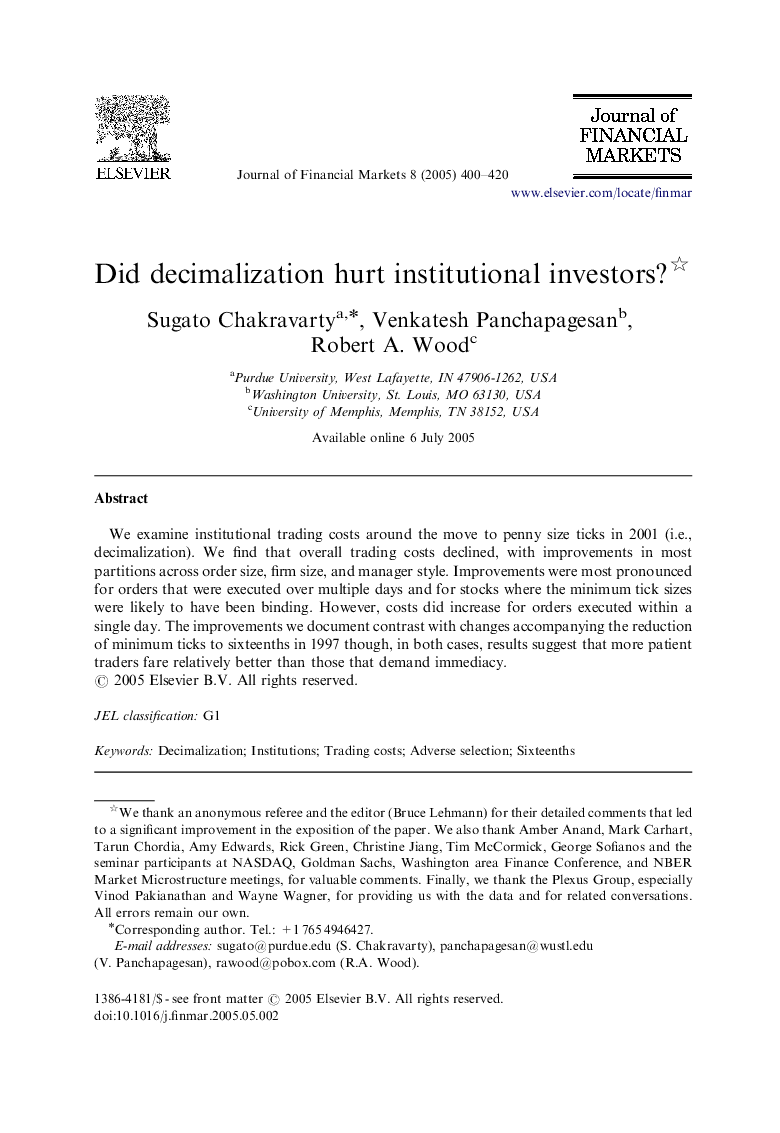| Article ID | Journal | Published Year | Pages | File Type |
|---|---|---|---|---|
| 10476348 | Journal of Financial Markets | 2005 | 21 Pages |
Abstract
We examine institutional trading costs around the move to penny size ticks in 2001 (i.e., decimalization). We find that overall trading costs declined, with improvements in most partitions across order size, firm size, and manager style. Improvements were most pronounced for orders that were executed over multiple days and for stocks where the minimum tick sizes were likely to have been binding. However, costs did increase for orders executed within a single day. The improvements we document contrast with changes accompanying the reduction of minimum ticks to sixteenths in 1997 though, in both cases, results suggest that more patient traders fare relatively better than those that demand immediacy.
Related Topics
Social Sciences and Humanities
Economics, Econometrics and Finance
Economics and Econometrics
Authors
Sugato Chakravarty, Venkatesh Panchapagesan, Robert A. Wood,
